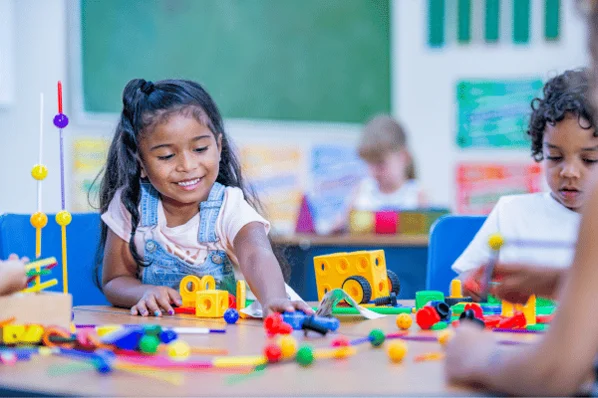I’ll be honest: I never imagined a product brief and a preschooler’s backpack would have much in common. As an IT professional, I spend my days sizing servers, benchmarking devices, and fussing over ergonomics for long coding sessions. Then one morning, watching my niece wrestle with a backpack three sizes too big, it clicked — the same usability principles I apply to developer tools apply to the tiny shoulder-slung worlds of preschoolers. Choosing the right preschooler backpack isn’t just about looks; it’s about comfort, confidence, and supporting early learning.
Below I’ll walk you through a friendly, practical guide with measuring tips, packing rules, and a few reminders about how a good preschooler bag can support early childhood education and social emotional learning.
Why size really matters (more than you think)
A backpack that’s too big pulls at a child’s posture, makes them tired, and teaches them to rely on grown-ups for a task they could learn to manage. That matters for early childhood development: when kids can carry their own items comfortably, they gain a small but meaningful sense of independence an important piece of early learning and play and learning. Conversely, a bag that’s too small won’t hold the essentials for preschool activities, which can frustrate your little one and their teacher.
Think of it like the wrong monitor height at your desk it’s a tiny mismatch, but over time it makes work harder. Same idea here.
Measure, don’t guess: how to size a preschooler backpack
Here’s a quick, no-gear method I use (yes, I measure things like a product manager habits die hard):
-
Measure the child’s torso
Have your child stand upright. Measure from the base of the neck (where a shirt collar would sit) down to the top of the hips. This is the torso length the key measurement for backpack fit. -
Compare backpack height
A properly sized preschooler bag should sit no higher than the child’s shoulders and no lower than the top of the hips. Ideally, the backpack’s back panel is about two-thirds the child’s torso length. -
Strap test
When worn, the shoulder straps should be snug but not digging in. Chest clips (sternum straps) are optional for preschoolers, but a lightly padded strap is a win. -
Weight check
Rule of thumb: the backpack’s contents should be no more than about 10% of your child’s body weight. For a 30-pound child, aim for 3 pounds worth of contents. That includes water bottles!
Measuring may feel technical, but it’s the fastest way to avoid a year of awkward slumping.
What to pack (and what to leave at home)
Packing a preschooler’s backpack is a small exercise in product design prioritize essentials and limit scope.
-
Must-haves: spare clothes, small snack, labeled water bottle, and any teacher-requested items for preschool activities for preschoolers.
-
Nice-to-have: a small comfort item (if allowed), a sun hat in summer.
-
Leave out: heavy toys, multiple books, bulky items that push weight beyond the comfort threshold.
When I help friends pack, I treat the bag like a minimal viable product: everything included earns its place. This teaches the pre schooler to understand priorities and reduces morning friction.
Backpack features that matter (beyond size)
Once you’ve sized the bag, look for features that protect tiny shoulders and support early education routines:
-
Padded, adjustable straps distribute weight evenly.
-
Lightweight materials reduce the empty weight so contents become the main load.
-
Reflective accents safety during dim mornings.
-
Easy-to-open zippers and wide openings independence boosters for teaching for preschoolers and classroom transitions.
-
Clear name tag window a small UX win that avoids mix-ups.
-
Durable base resists wear from being placed on playground surfaces.
A small pocket system helps teach organization separate lunch from art supplies. It’s early training in managing personal tools, a skill that translates nicely into tech workflows later on.
Packing strategy: ergonomics + routine
Create a simple packing ritual. I treat it like a daily checklist I’d use for a deployment:
-
Night before: place the labeled water bottle, spare clothes, and snack in the bag.
-
Morning: child places one favorite book or drawing (teacher-permitted).
-
Teacher handoff: check that name tag is visible.
This routine reduces stress and models responsibility important parts of early childhood and development and social emotional learning. Plus, it saves parents time (and late sprints).
Connecting the dots: what this teaches kids and future IT pros
Choosing the right backpack is a small design problem with real human outcomes. For kids, it supports mobility, confidence, and participation in early childhood activities. For parents and educators, it’s about creating an environment where teaching for preschoolers blends with play and learning.
If you’re exploring a career in IT, notice the parallels: good tools fit the user, respect ergonomics, and reduce cognitive load. Whether you’re optimizing a UI or choosing a backpack, the principles are the same measure, iterate, and listen to user feedback (in this case, your child’s complaints or smiles).
Quick checklist before you buy
-
Have you measured the torso?
-
Is the empty bag lightweight and the back panel appropriately sized?
-
Do straps sit comfortably without slipping?
-
Can your child open it independently for preschool activities?
-
Is the total packed weight within a safe range for their size?
Conclusion a small switch, a big difference
A thoughtfully sized preschooler backpack does more than hold stickers and snacks it protects tiny bodies, encourages independence, and supports meaningful early learning moments. Take five minutes to measure, choose sensible features, and create a simple packing habit. Your child’s shoulders (and mornings) will thank you and you’ll have one fewer item to troubleshoot each day.
If you want, I can walk you through measuring step-by-step over chat or suggest a short list of backpacks that fit these criteria. Either way, start with fit the rest follows.



